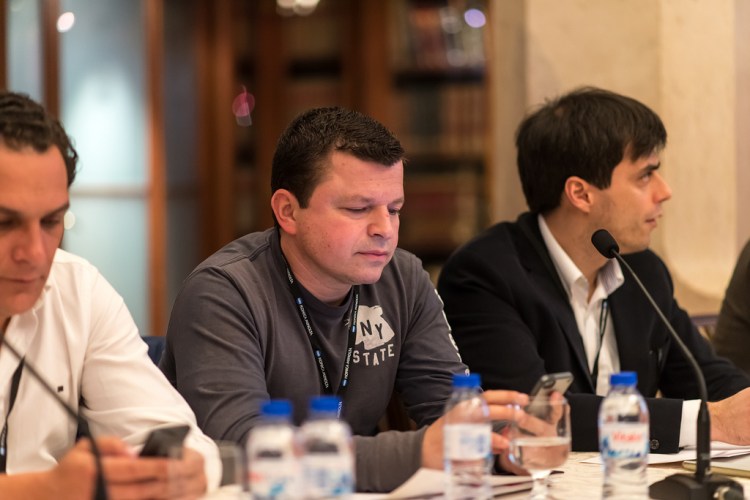Weeks after announcing Facebook’s mobile-first strategy of fragmenting Facebook into multiple apps, like Paper, Mark Zuckerberg buys one of the world’s most popular instant messaging apps for $19 billion. Although we haven’t officially heard how Facebook will use WhatsApp, its founder says “nothing will change.” If Instagram is anything to go by, WhatsApp will remain a unique, single-purpose experience free of Facebook branding.
As we’re witnessing in the consumer space, single-purpose apps like WhatsApp and Instagram, and even Snapchat, are disrupting all-in-one legacy apps like Facebook. Consumer app developers have quickly discovered that you can top the download charts and hit big engagement numbers by developing a seamless, single-purpose app. Is it time for a similar disruption on the desktop? Is there an opportunity for a “WhatsApp of productivity” to disrupt the king of all-in-one suites, Microsoft Office?
To visualize this, let’s re-imagine this suite. I like Office, but when I really need to write, I use iA Writer. iA Writer is purely for writing text — no messing around with fonts, colors, or formats. I’ll spend a chunk of time just getting my thoughts down in iA Writer and then use Microsoft Word to format my text. Or when I make presentations, I edit video clips in a video editor, and then drop them into my PowerPoint deck.
Technically, I could use Microsoft Office to perform all of these tasks, but why deal with all the distraction of features I’m not using, when I can use a focused, easy-to-use, best-of-breed standalone app?
It’s time we exploit the fragmentation trend we’re seeing in the consumer space and apply it to productivity software. Applications should be broken up so that they include all the features users need to do their work in a given session and no more. In the Microsoft Word example, you could separate the application based on features for writing, features for formatting, features for making charts, etc.
Even as you fragment software, it’s extremely important to keep the user’s workflow in mind. For instance, if I’m jotting down my thoughts in iA Writer, I should be able to easily export my file to Microsoft Word where I do my formatting, and easily bring the document back into iA Writer when I want to edit it. Or if I’m collaborating on a document, the reviewer should be able to email the author with proposed edits, and the author should be able to take action to accept or reject those changes from their inbox without opening up the full Word application, which isn’t always relevant at that time.
Facebook’s app ecosystem now includes separate applications for taking and sharing photos (Instagram), messaging contacts (WhatsApp), and reading news and status updates (Paper). It’s time for the programs we use for work to give us this kind of focused applications for bite-sized chunks of activity in a robust, connected environment. The future of productivity software relies on it.
Boaz Gurdin is an experience researcher at EchoUser, a user-experience design firm based in San Francisco.
VentureBeat's mission is to be a digital town square for technical decision-makers to gain knowledge about transformative enterprise technology and transact. Learn More

